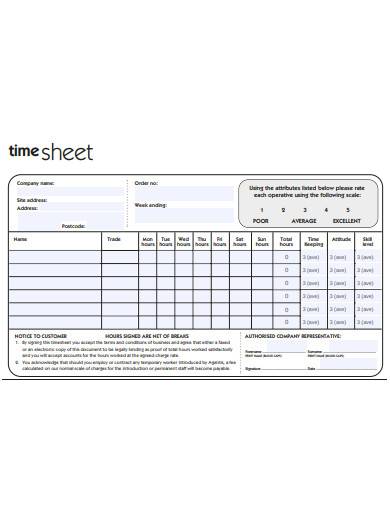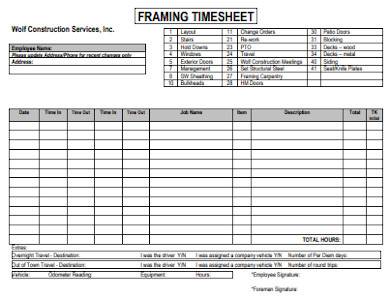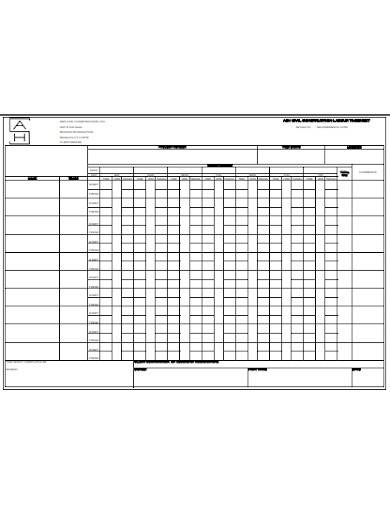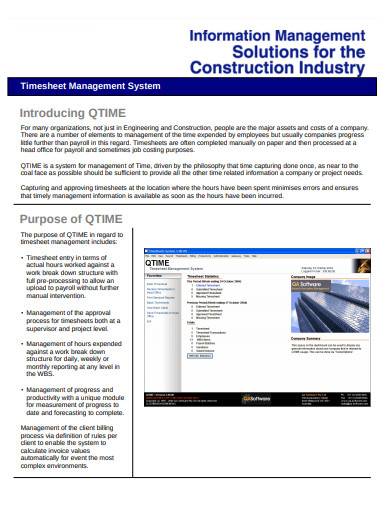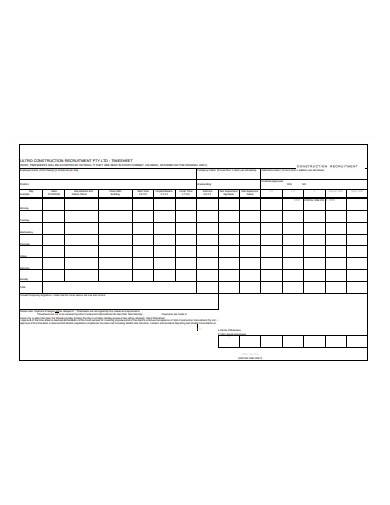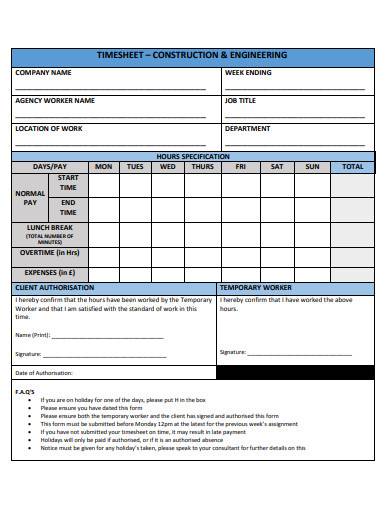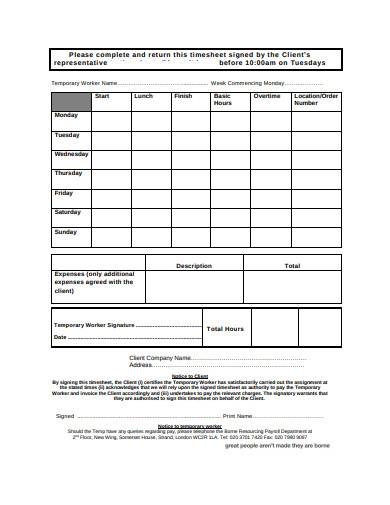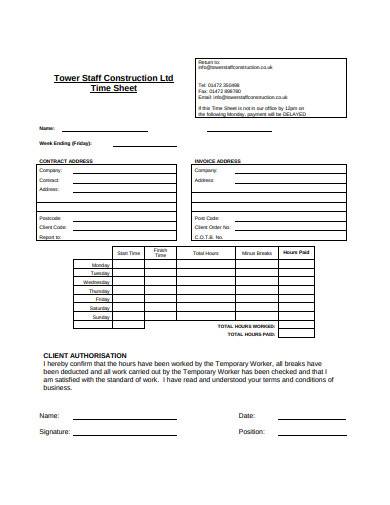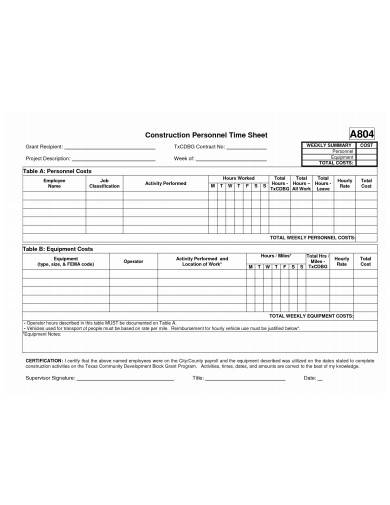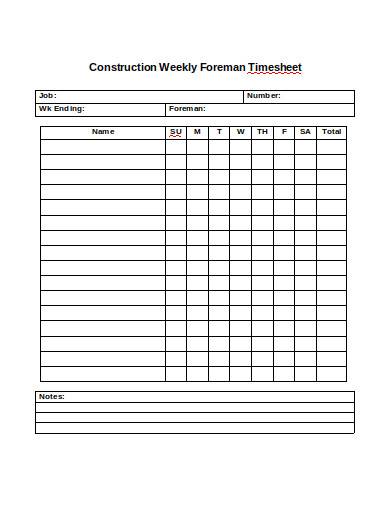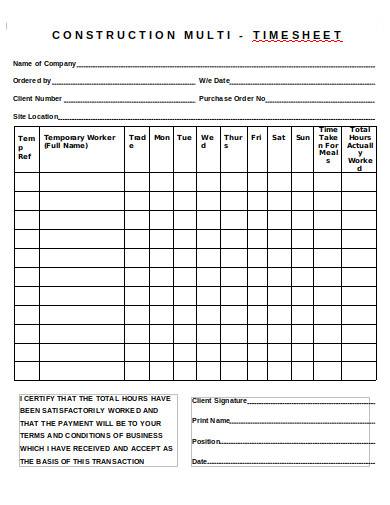Long gone are the days of slave labor since, with the rise of human rights, workers now expected to be compensated for their effort. However, with time also came a role reversal as now there are instances of employees slacking off at their stations and still expect to be paid their “due diligence.” Imagine working with that kind of person on your proposed construction project? Quite aggravating, isn’t it? So, how do you cull the slackers and make sure that your team is compromised only of workers that share your standards of work etiquette? With the help of construction timesheets.
General Construction Timesheet Template
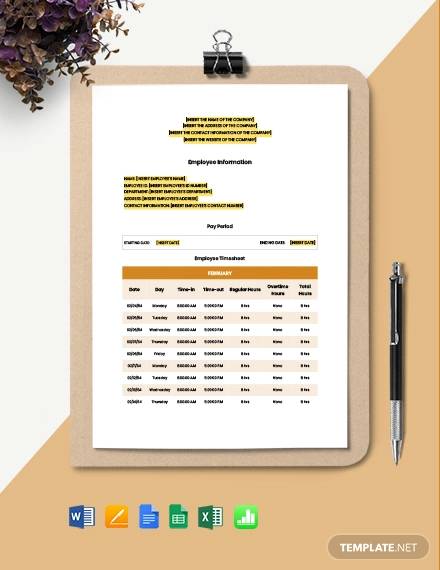
Daily Construction Timesheet Template
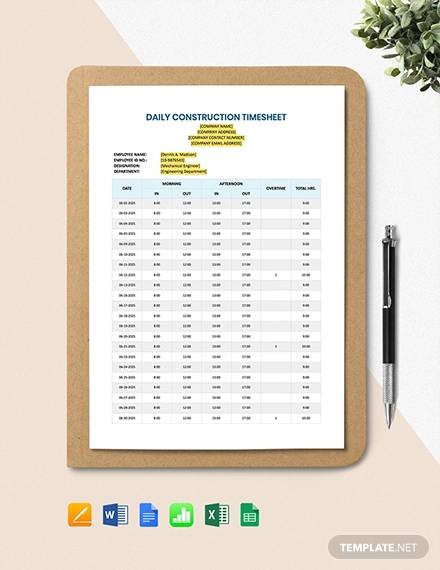
Free Simple Construction Timesheet Template
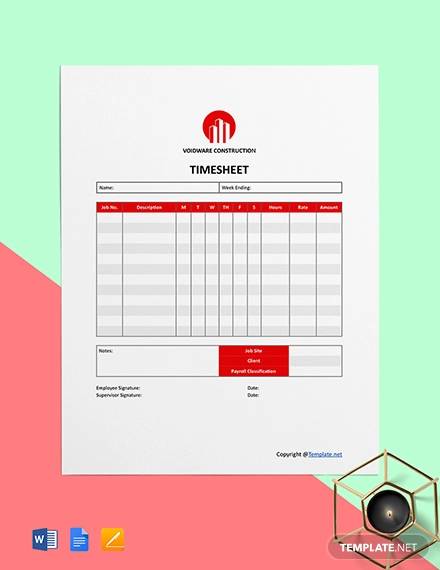
Free Editable Construction Timesheet Template
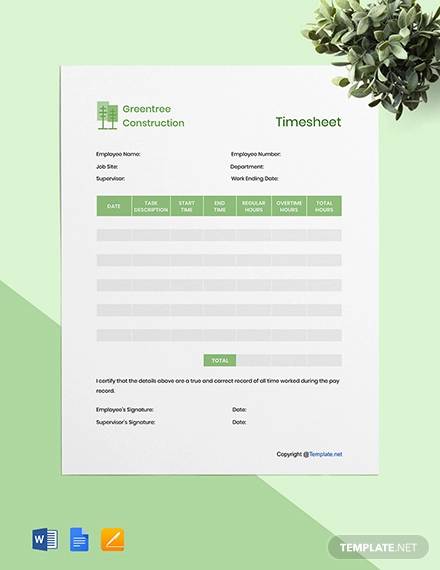
Free Blank Construction Timesheet Template
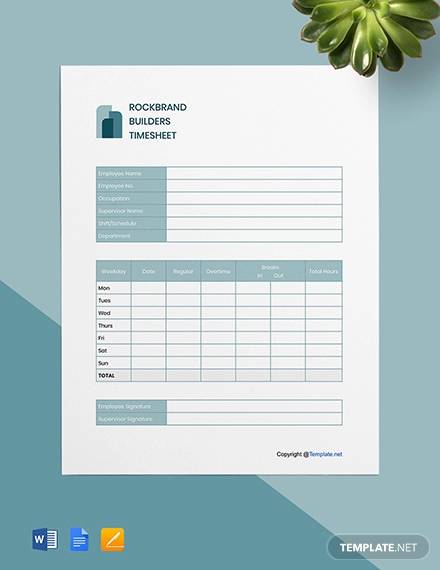
What is Construction Timesheet?
Have you ever experienced clocking in for work using either a time card or a thumbprint reader? And then after your shift logged out by doing the same process? Whether it was done with a machine or by hand, a timesheet is most often used to record the working hours of employees. This allows you to formulate how much your workers should earn based on their productivity and hours spent working.
Considering that construction is now considered a business industry, this system is quite useful when appropriately implemented. Think about it this way; when you want your project to have the best possible outcome, you gather data and plan it out. If your workers want to do the same, you collect data on their performance and create a management plan from there. When you have information on how many hours they spend working and compare it to their on-site performance, you can accurately provide them their due rates and wages which—hopefully—motivate them to work harder.
Chronological Labor
From 1979 – 2018, the American economy has seen an increase in workers being paid hourly rates from roughly 51 million to a staggering 81 million—and for a good reason. Hourly rates bring multiple advantages to the table, such as more accurate wages, a better quality of work, and more effective monitoring. In fact, this method is so advantageous that both office workers an construction crews are employed under this system.
As such, when using this system, having a way to track the number of hours your employees work on-site is crucial. That’s why an hourly-wage system works best when you have a timesheet or any program that can record progress. From there, you can further expand your concept by adding incentives for excellent performance and overtime compensation, while also providing adequate disciplinary actions and help programs for employees who can’t make the cut—whether it’s voluntary underperformance or not is your call. Whatever your concept is, developing an action plan to round it all out improves the overall work environment and provides you with convenience, and your crew with assurance.
10+ Construction Timesheet Samples
With the growing demand for infrastructure and real estate, more and more employment opportunities are rising. However, with this newfound success come the various complication mentioned earlier. Hence, to deal with this matter, use these sample templates to assist you in your drafting.
1. Construction Timesheet
2. Construction Framing Timesheet
3. Civil Construction Labour Timesheet
4. Engineering and Construction Timesheet Management
5. Construction Recruitment Timesheet
6. Timesheet for Construction and Engineering
7. Construction Timesheet Sample
8. Staff Construction Time Sheet
9. Construction Personnel Time Sheet
10. Construction Weekly Foreman Timesheet
11. Construction Multi Timesheet Sample
How to Create a Construction Timesheet
Construction isn’t a one-person job, and a competent workforce is necessary for the success of any construction project. Your goal should be ensuring that your crew does their best on the job will give you better quality results on time. However, a construction timesheet isn’t as easy as jotting down a few numbers on a sheet and being done with it—it takes plenty of time, refining, and maintenance. So, to help you out in creating and sustaining your system, here are a few suggestions and tips.
1. Use a Viable Platform
Despite its blatantly evident necessity, a timesheet is only functional if you can record and store data without the worry of compromise. This doesn’t necessarily mean that a sample spreadsheet via an app or software is the only option; however, it is the safest option. The old “book worm” method is still viable despite the rise of technology, but it is easier to breach and tamper with. Whatever your process of choice is, if you can safely secure that data to calculate your crew’s wages, then it’s a viable platform.
2. Utilize a Timeline
Utilizing a construction timeline is an excellent idea when gaging your project duration. This allows you to both estimate the number of working hours—and, eventually, pay—of each employee, as well as provide them a “time prospectus.” As such, whether you’re using a Gantt Chart, a management plan, or any other document that provides a solid basis for labor, the bottom line is that a timeline gives you a conceptual work pattern for the duration of the project.
3. Set Work Hours
The most accepted concept for time-based labor is the “9 to 5” concept. This ideal roughly translates to 8 hours a day, which accumulates to around 40 hours a week. If you think that the project’s deadline can only be met by dividing the shift into both a morning and evening phase, then make sure that the working hours of both shifts remain the same. Whatever your time management plan is, the important thing to note is that you set rigid, yet adequate working hours.
4. Have a Data Gathering System
What all the previously mentioned tips sum up to is putting the “sheet” in construction timesheet—it’s up to you to establish a means of procuring data. From punch-card machines to fingerprint readers, how you monitor your employees when they time in and out of their shifts and or breaks is for you to decide. Furthermore, when determining your data gathering procedure, make sure that it efficiently utilize your means of storing your data.
Construction, like all business industries, are bound by the chains of deadlines and forced to follow its every whim. The wisest and most successful companies learn to work to reach impossible tasks and request efficiently. However, they also understand that making your workers work more than 12 hours a day while still expecting their top-notch performance is a one-way ticket to horrible downfalls and lawsuits galore. As such, using a construction timeline is one of your most essential assets as it provides your crew with a scope of the working hours, and you with happy, healthy, and hard-working employees.
Related Posts
FREE 20+ Training Sheet Samples in PDF | MS Word
FREE 20+ Employee Sheet Samples in PDF | MS Word
FREE 10+ Employee Attendance Sheet Samples in PDF
FREE 12+ Balance Sheet Formats in MS Word | PDF | Excel
FREE 5+ Construction Bid Sheet Samples in PDF | MS Word | Excel
FREE 26+ Construction Sheet Samples in MS Word | Google Docs | Excel
FREE 20+ Continuation Sheet Samples in PDF | MS Word
FREE 25+ Program Sheet Samples in MS Word | Google Docs | Pages | PDF
FREE 33+ Student Sheet Samples in PDF | MS Word
FREE 32+ Planning Sheet Samples in PDF | MS Word
FREE 10+ OC Sheet Samples in PDF
FREE 10+ Beat Sheet Samples in PDF
FREE 3+ Paper Sign Up Sheet Samples in PDF
FREE 50+ Summary Sheet Samples in MS Word | Google Docs | Google Sheets | Excel | PDF
FREE 10+ Cleaning Bid Sheet Samples [ Commercial, House, Residential ]

